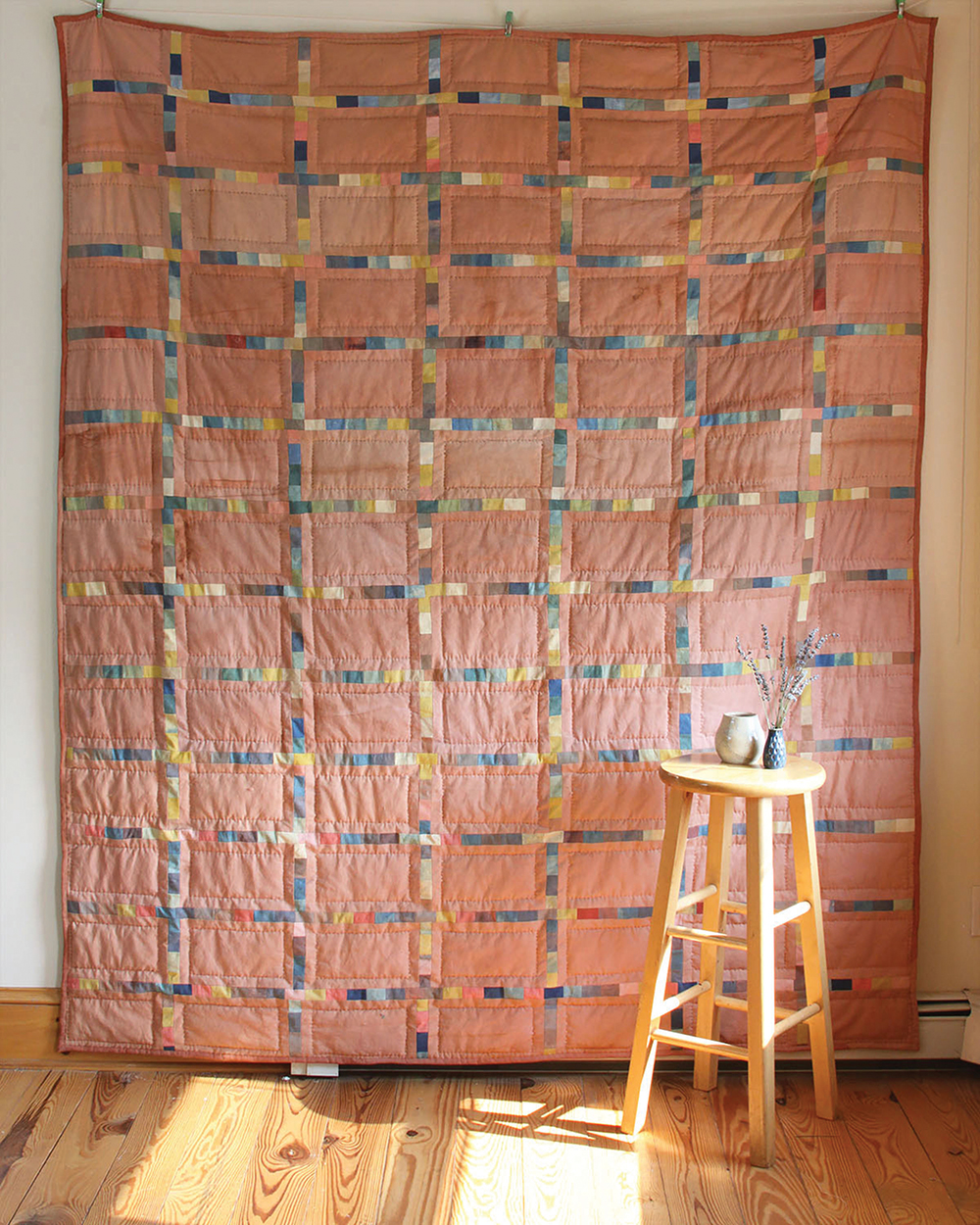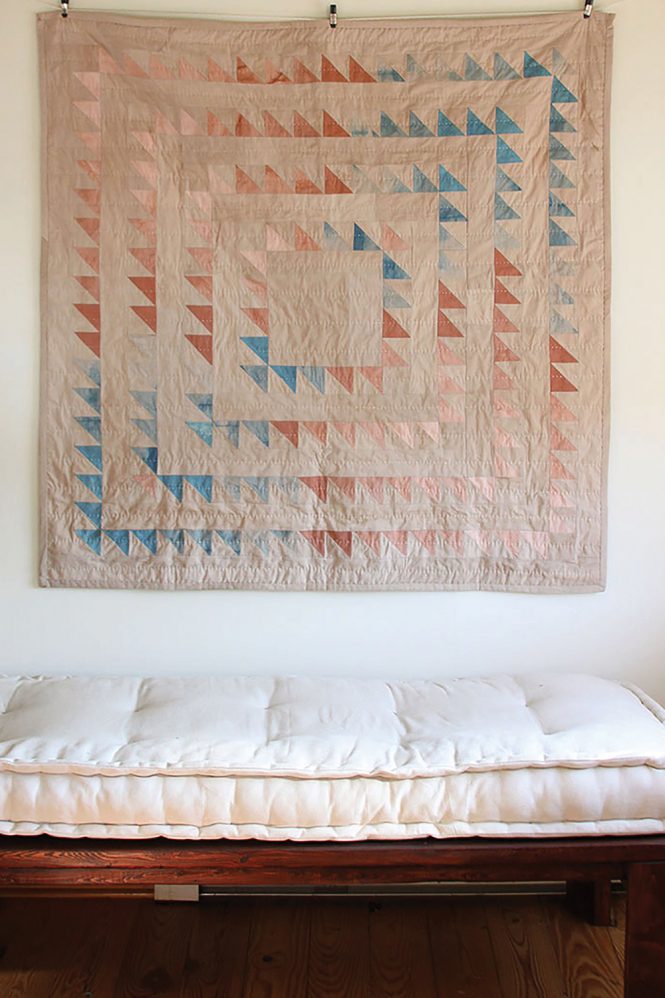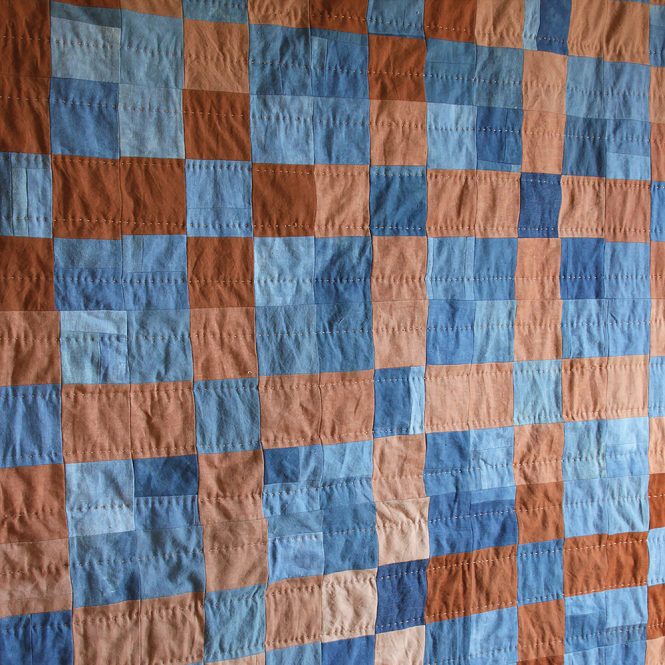Salt + Still: Craft Quilts And Sew Forth
By Susan Piperato | Photographs courtesy of Salt+Still | Spring 2020 | Departments | Makers
Ali Smith studied textiles at the University of Vermont, but designing and making quilts never occurred to her until she had established herself in the communications field. “It wasn’t until years later, when I took a weekend natural dye intensive at the Textile Arts Center in Brooklyn, that I got the textile spark,” says the Peekskill artist. “I kept experimenting with natural dyes on my own and amassed all this plant-dyed fabric. I started quilting out of practicality; it seemed like a fun way to use up my plant-dyed fabric collection.”
In 2013, Smith made her first quilt, using a DIY pattern from Haptic Lab. A year later, she was hooked on stitching, and launched Salt + Still quilting studio. “I was managing the communications department of a company, which involved very little creativity, so I started Salt + Still as my creative outlet,” she recalls. “It didn’t begin as a business; it was more of a studio practice where I was experimenting with natural dyes and textiles and documenting my process on Instagram. A couple months into this, a buyer for an online shop inquired about placing a wholesale order for some pillows I had made, and, not wanting to turn down the opportunity, I had to learn how to become a business.”

Since then, Smith has taught herself the fine points of quilt-making by using antique manuals on the art. She designs and makes eight to 15 quilts a year, including commissions for the likes of the Farmhouse Project and New York City’s Tonchin restaurant; teaches quilting workshops at Drop Forge & Tool in Hudson; and is on the radar of collectors. Her quilt designs come from “everywhere”—including the works of Frank Stella, Anni Albers, and Bridget Riley; American motifs; Korean bojagi; and boro textiles—and her color palette is inspired by Californian sea- and landscapes.
Smith won’t start a quilt until she’s “truly excited” by an idea, and each quilt takes 30 to 50 hours to assemble. “Quilting is meditative but also very laborious, which I don’t think many people realize,” she says. “Creating the top of the quilt takes me days to assemble with focus and precision, but the back of the quilt gets put together in an hour or two. On the back, I use all the scraps left over from the front and piece them together in a way that is organic yet balanced. It doesn’t take much thought; it’s fun and intuitive.”

Each quilt is made sustainably, using plant-based dyes or even foraged dyestuffs or “things saved from the kitchen, like onion skins or avocado pits” to color organic fibers such as cotton, linen, and hemp, and is hand-sewn with cotton sashiko thread. “It’s very time consuming, but I love the way it looks, and I find machine quilting to be impersonal,” Smith admits. “I think about my work in the long term and how the materials I use will eventually break down.”
But what matters most to her about quilting is being able to “see the human hand in them,” she says. “A lot of us are craving person-to-person connection, and I think someone chooses to put a handmade piece in his or her home because they feel a connection to it and, in turn, feel connected to the person who made it.”
